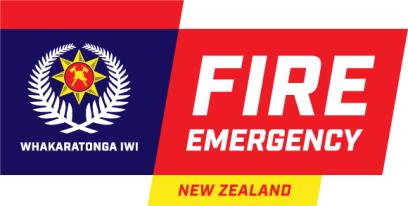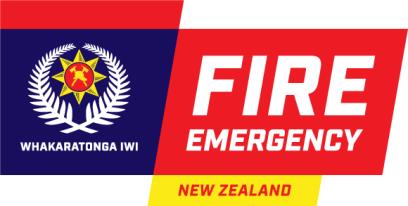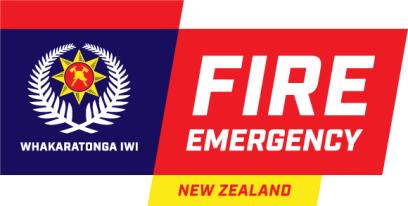

 POSITION DESCRIPTION
POSITION DESCRIPTION
STATION OFFICER
NATIONAL URBAN FIRE MANAGEMENT
Job Number:
Various
Business area:
Operations
Location:
Various
Reports to:
Assistant Area Manager
Version date:
October 2012
ORGANISATION CONTEXT
Fire and Emergency New Zealand is a Crown Entity established on 1 July 2017 under the Fire and
Emergency Services Act 2017. The role of our new organisation is to reduce unwanted fires, respond
to structural and vegetation fires and other emergencies including motor vehicle crashes, medical
emergencies, hazardous substance related incidents, natural disasters and support increased
community resilience.
Our new, unified organisation provides a fire and emergency service that delivers for communities, and
the firefighters who serve them, now and in the future.
POSITION CONTEXT AND PURPOSE
Station Officers lead, and are a member of, a firefighter crew. They provide direction, assign work and
manage fire crews in their role of reducing the incidence and consequences of fire through risk
reduction and response activities, and response activities associated with other emergency incidents.
The purpose of the Station Officer role is to contribute to reducing the incidence and consequences of
fire by leading a crew in undertaking fire prevention and fire loss reduction strategies within
communities, maintaining a state of response readiness, undertaking response activities at a wide
range of emergency incidents, and post-incident recovery and restoration of response readiness. As
an Officer the role is also responsible for compliance with command and control procedures at all
incidents, assuming command in single and multi-crew responses, and operating as a member of
incident management teams at larger scale incidents
SCOPE OF JOB
Financial delegations: Expenditure $ 1,000
under the Official Information Act 1982
Staff responsibility:
Firefighter Crew
Released
eafire
fireandemergency.nz

1982
Act
CRITERIA FOR PROGRESSION THROUGH REMUNERATION SCALE
The following table illustrates the level of competence required in relation to each core accountability area, for progression through the first five steps of the Station Officer remuneration scale. The
remuneration scale provides for annual progression, based on development up to a fully competent level across all aspects of the Station Officer position. The table depicts the level of competence
required against each core accountability area for each of the progression steps, where;
requires an individual to be able to perform some aspects of that accountability area independently, without supervision, support or guidance,
requires an individual to be able to perform most aspects of that accountability area independently, without supervision, support or guidance, and
requires an individual to be able to perform all aspects of that accountability area independently, without supervision, support or guidance.
Information
This table should be read in conjunction with the Key Accountabilities section of this position description, which further defines which aspects of each accountability area are required to be performed
independently, without supervision, support or guidance at each progression step. In the Key Accountabilities section, the coloured bars under each sub-accountability indicate at which point in a new
Station Officer's development they should be able to perform that accountability to a fully competent level, without supervision, support or guidance, where light green illustrates that the Station Officer
should be developing in this area, and dark green illustrates that the Station Officer should be fully competent in this area.
The year at which a new Station Officer is expected to be fully competent in each of the areas is inducated in the bar below each of the sub- accountabilities.
Official
Progression Step
Accountability Area
Year 1 - 92%
Year 2 - 94%
Year 3 - 96%
Year 4 - 98%
Year 5 - 100%
Pre-Incident Preparation
the
Incident Management
Post-Incident Management
Community Risk Reduction
Administration
Crew Leadership, Management and Administration
Training
under
Released




 KEY ACCOUNTABILITIES & DELIVERABLES
KEY ACCOUNTABILITIES & DELIVERABLES
The job holder is responsible for delivering results in the following areas:
Pre-Incident Preparation
Responsible for ensuring that their crew maintains a state of operational readiness that enables a
timely and effective response to incidents:
1982
Ensures that their crew develop and document a comprehensive understanding of the nature and
risk profile of the response area to enable an effective response.
Year
1
2
3
4
5
Act
Contributes to organisational risk awareness through detailed understanding of their response
area.
Year
1
2
3
4
5
Ensures that operational staff within their command maintain the skills necessary to perform their
operational duties to the required standard.
Year
1
2
3
4
5
Ensures the testing and maintenance of all equipment to Fire and Emergency New Zealand
standards to ensure it is constantly operationally ready.
Year
1
2
3
4
5
Information
Ensures that all crew members are appropriately equipped with PPE and maintains compliance
with PPE standards.
Year
1
2
3
4
5
Ensures all crew members understand and maintain a working knowledge of all relevant statutory
obligations and operational procedures to ensure compliance.
Official
Year
1
2
3
4
5
Identifies the resources required to respond effectively based on the risk profile and makes
detailed submissions to secure required resources.
the
Year
1
2
3
4
5
Incident Management
As officer in charge of a responding crew, and, in many cases, incident controller, directs the activities
of other personnel to ensure safety and effective response:
under
Direct activities of crew(s) at emergency incidents, including directing individuals actions in
hazardous environments.
Year
1
2
3
4
5
Responsible for dynamic risk assessment and safe person concept in respect of him/herself and
his/her crew.
Year
1
2
3
4
5
Released
eafire
fireandemergency.nz



Perform functions of the command and control structure of an incident which can include
assuming command, undertaking scene assessment, identifying projected resource needs,
managing multiple crews, structuring incident ground facilities, establishing incident management
teams, selecting, implementing, reviewing and changing response strategy and tactics, preparing
for escalation and hand-over, co-ordinating size-up.
1982
Year
1
2
3
4
5
Leads and tasks individuals with required activities at an emergency incidents, and where not the
officer in charge, as directed by the officer in charge. This can include activities such as:
Fire attack/exposure protection
Act
Search and rescue
PROUD
Salvage/recommission
HISTORY
MVA extrication
Scene safety
BRIGHT
Isolate, contain, identify, make safe and decontaminate Hazardous Substances
Patient Care
FUTURE
General rescue
Lines rescue
Natural disaster events
Medical response and medical assist
Year
1
2
3
4
5
Information
Post-Incident Management
Leads and/or contributes to post-incident response actions associated with clean-up, investigation and
restoration of operational readiness:
Leads investigation and responsible for determining initial cause of fire.
Year
1
2
3
4
5
Official
Represents Fire and Emergency NZ in legal proceedings relating to incidents attended.
Year
1
2
3
4
5
Selects tactics to ensure scene preservation to enable fire investigation to be completed.
the
Year
1
2
3
4
5
Monitors and ensures ongoing safety of crew during salvage.
Year
1
2
3
4
5
Assists in providing advice and support to victims.
under
Year
1
2
3
4
5
Directs the clean up and recovery of the incident site and restore the fire appliance and
equipment to full readiness for the next emergency, and ensures any post- incident repairs to
equipment needed are carried out in a timely manner.
Year
1
2
3
4
5
Leads operational debriefing to ensure future operational effectiveness, including post-incident
recording.
Released Year 1 2 3 4 5
fireandemergency.nz


Takes actions to address firefighter welfare needs.
Year
1
2
3
4
5
Represents Fire and Emergency NZ in required stakeholder engagement including media, police,
ambulance, insurance companies, TLA's, power authorities etc.
Year
1
2
3
4
5
1982
Community Risk Reduction
Establishes, implements and leads crew in executing plans and activities focused on reducing fire risk
within the Brigade's response area or wider community:
Act
PROUD
Plan and implement local annual community risk reduction plan in accordance with Area's
HISTORY
business plan.
BRIGHT
Year
1
2
3
4
5
FUTURE
Liaises with fire risk management personnel to ensure all risk reduction activities are planned and
co-ordinated effectively, and to access specialist advice.
Year
1
2
3
4
5
Dealing with public enquiries and providing advice on risk reduction.
Year
1
2
3
4
5
Information
Manage the delivery of national risk reduction initiatives and programmes at a local level
including FireWise, Home Fire Safety Checks, etc.
Year
1
2
3
4
5
Working with at-risk community groups to enhance fire safety knowledge and understanding.
Year
1
2
3
4
5
Official
Administration Leads and undertakes a range of administrative functions associated with the core roles of response
the
readiness, incident response, risk reduction and team leadership and management:
Maintains all relevant Fire and Emergency New Zealand databases (including the core Station
Management System - SMS) related to core operational, training, risk reduction and station
maintenance and management/supervision activities.
Year
1
2
3
4
5
under
Ensures station supplies are maintained to appropriate levels to support effective running of
brigade and operational response.
Year
1
2
3
4
5
Makes effective decisions about asset use in a manner that protects their value, usefulness and
durability.
Year
1
2
3
4
5
Released
fireandemergency.nz

 Crew Leadership, Management and Supervision
Crew Leadership, Management and Supervision
Provides supervision, management and leadership to his or her crew in a manner which maximises
crew effectiveness and performance and ensures all relevant Fire and Emergency New Zealand people
management obligations are met:
Manages relationships between paid and volunteer crews to foster close co-operation and
effective response.
1982
Year
1
2
3
4
5
Contributes to inter-watch co-operation and co-ordination to ensure efficient running of station.
Year
1
2
3
4
5
Act
PROUD
Sets and communicate standards of performance and achievement and ensure an environment
HISTORY
is created where these standards are met.
BRIGHT
Year
1
2
3
4
5
FUTURE
Ensure all Human Resources policies and procedures are adhered to.
Year
1
2
3
4
5
Provide coaching, feedback and support to enable staff to achieve high levels of performance.
Year
1
2
3
4
5
Information
Ensure early and successful resolution of disputes, grievances and performance issues.
Year
1
2
3
4
5
Ensure resources are allocated to meet work volumes.
Year
1
2
3
4
5
Official
Training
Ensures crew members receive training targeted at developing their competence and capability:
Develops and implements a training plan for crew members that ensures they have all of the
skills required to perform effectively.
the
Year
1
2
3
4
5
Lead crew training activities.
Year
1
2
3
4
5
under
SAFETY, HEALTH & WELLBEING - RESPONSIBILITIES
Fulfils Fire and Emergency New Zealand Employer obligations in respect of the health and safety of
his/her crew and ensures compliance with all health and safety statutory and policy accountabilities.:
Ensuring knowledge of the Health & Safety National Policy and abiding by and actively promote
its principles
Ensuring that a safe and healthy working environment is maintained for colleagues and visitors on
site, with particular emphasis on ensuring that all identified hazards are controlled, accidents and
near miss incidents are managed, and employees are trained or supervised
Released Monitoring the completion of all Occupational Health & Safety records and documentation for staff
training, accidents, near misses, accident investigation, hazard management and health & safety
fireandemergency.nz


goals and objectives Managing the rehabilitation of employees as appropriate, and participating in
own rehabilitation should an injury be sustained
Any other duties consistent with the position as may be required from time to time by the Area
Manager or Assistant Area Manager.
KEY RELATIONSHIPS
Internal
External
1982
Other crew and brigade members
Communities
Other officers within Station/Area
Community Groups
Volunteer brigades within Area
Other Emergency Service Partners
Other brigades within Area
Building owners
Act
Area Management
Businesses
PROUD
Fire Risk Management Officers
HISTORY
Volunteer Support Officers
Training Officers
BRIGHT
FUTURE
QUALIFICATIONS, ATTRIBUTES AND EXPERIENCE
Suitable candidates will possess the following skills/attributes:
Essential
Successful completion of all Fire and Emergency New Zealand Career TAPS Programmes up to
Information
and including
Station Officer Level, or demonstrated competence to the same level
Sound technical and practical skills in the management of fire risk
Qualified Emergency Response Driver
In-depth knowledge of sections of the Fire Service Act, Forest and Rural Fires Act, Hazardous
Substances and New Organisms Act, Civil Defence and Emergency Management Act relevant to
their delegated statutory authorities
Official
Qualified Pump Operator
Significant knowledge and experience in applying fire suppression techniques
the
Competent in the use of MS Office suite and other Fire and Emergency IT based systems and
communication tools
Maintains ability to meet prescribed fitness standards and pass regular fitness assessment
Sound interpersonal skills and a demonstrated ability to communicate effectively with diverse
audiences
Demonstrated ability to display leadership and direction to teams and individuals in a complex and
under
challenging environment
Excellent understanding and knowledge of health and safety legislation and a demonstrated
commitment to best practice health and safety standards in the workplace
Desirable
Level 5 National Certificate in Fire and Rescue Services (Urban) or equivalent experience
Level 4 National Certificate in Business (First Line Management) or equivalent experience
Released
fireandemergency.nz
















SUPERVISOR: Leads personnel in fulfilling roles and responsibilities to achieve required outcomes.
1982
SELF
INFLUENCE
ETHICS
RELATIONSHIPS
STRATEGY
PEOPLE
RESULTS
Act
1. Demonstrates self
1. Invites input from
1. Makes decisions for
1.
Builds relationships
1. Gathers and
1. Trusts individuals and
1. Dedicated to
awareness, reflects
team and shares
the team without
internally and
investigates
the team to perform.
meeting the
on own performance;
ownership of team
favouritism or bias.
externally and uses
information from a
expectations and
identifies strengths
outcomes.
these to develop
variety of sources
2. Works collaboratively
requirements of
and development
2. Promotes and models
mutually beneficial
and explores new
as part of a team.
internal and external
needs.
2. Clearly
ethical behaviour
outcomes.
ideas and different
clients.
communicates to the
consistent with
viewpoints.
3. Is open to the
2. Learns and reflects
team how what they
organisational values
2.
Establishes, uses and
perspective of others.
2. Makes sound
on how own
do is important to
and code of conduct.
maintains external
2. Understands how
decisions and
behaviours and work
organisational
and internal
cultural, social,
determines a course
style impact on
objectives.
3. Leads by example
networks to achieve
historical and political
4. Identifies and
of action for the
others and on work
and maintains a high
team goals.
factors affect the
nurtures talent.
team.
tasks.
level of
organisation.
3. Communicates in an
professionalism and
3.
Is aware of
open and frank
Information
impartiality; expects
contentious political
5. Gives timely
3. Establishes quality
3. Actively seeks
manner and builds
3. Analyses situations
and encourages team
issues that impact on
recognition and
assurance measures
feedback from
trust amongst team
systematically
and peers to apply
the organisation.
feedback on
to maintain and
managers, peers and
members.
the same high
and develops realistic
performance and
improve outcomes.
direct reports and
standards.
4.
Communicates and
solutions.
deals constructively
acts upon it.
4. Models behaviours
involves the team in
with performance
4. Investigates ways to
that are consistent
organisational
problems.
4. Translates higher
improve team
4. Sustains effort after
with the values and
campaigns and
level goals and
effectiveness and
performance
practices of the
programmes.
outcomes into
6. Works with team
implements
Official
setbacks; motivates
organisation.
appropriate tasks for
members to establish
continuous
the team to move
the team.
performance
improvement
forward.
objectives.
5. Shares information
activities.
5. Understands the
with team and helps
need to see the ‘big
7. Resolves inter-
the
5. Maintains an
others to adapt and
5. Integrates own
picture’ and
personnel and inter-
optimistic outlook in
make change work.
knowledge and
recognises how
group conflict
challenging
professional
relationships and
constructively.
situations; retains
expertise to achieve
6. Leads team to
processes fit within it.
focus on team
organisational
achieve outcomes
outcomes and
objectives to achieve
aligned to
overcomes significant
results.
organisational
barriers and
under
objectives.
obstacles.
6. Accepts ownership of
decisions and takes
re sponsibility for
team outcomes.
fireandemergency.nz
Released

































